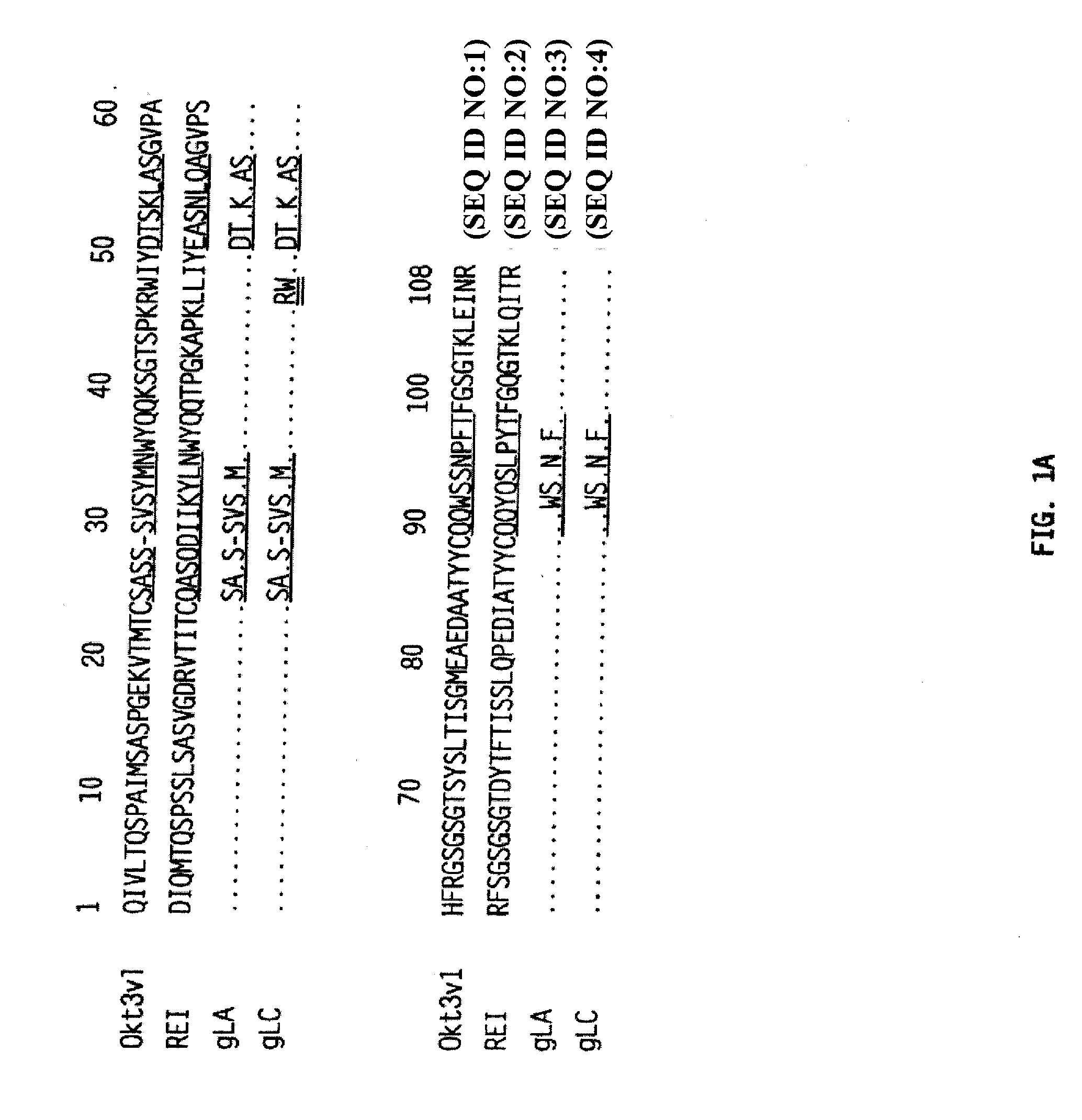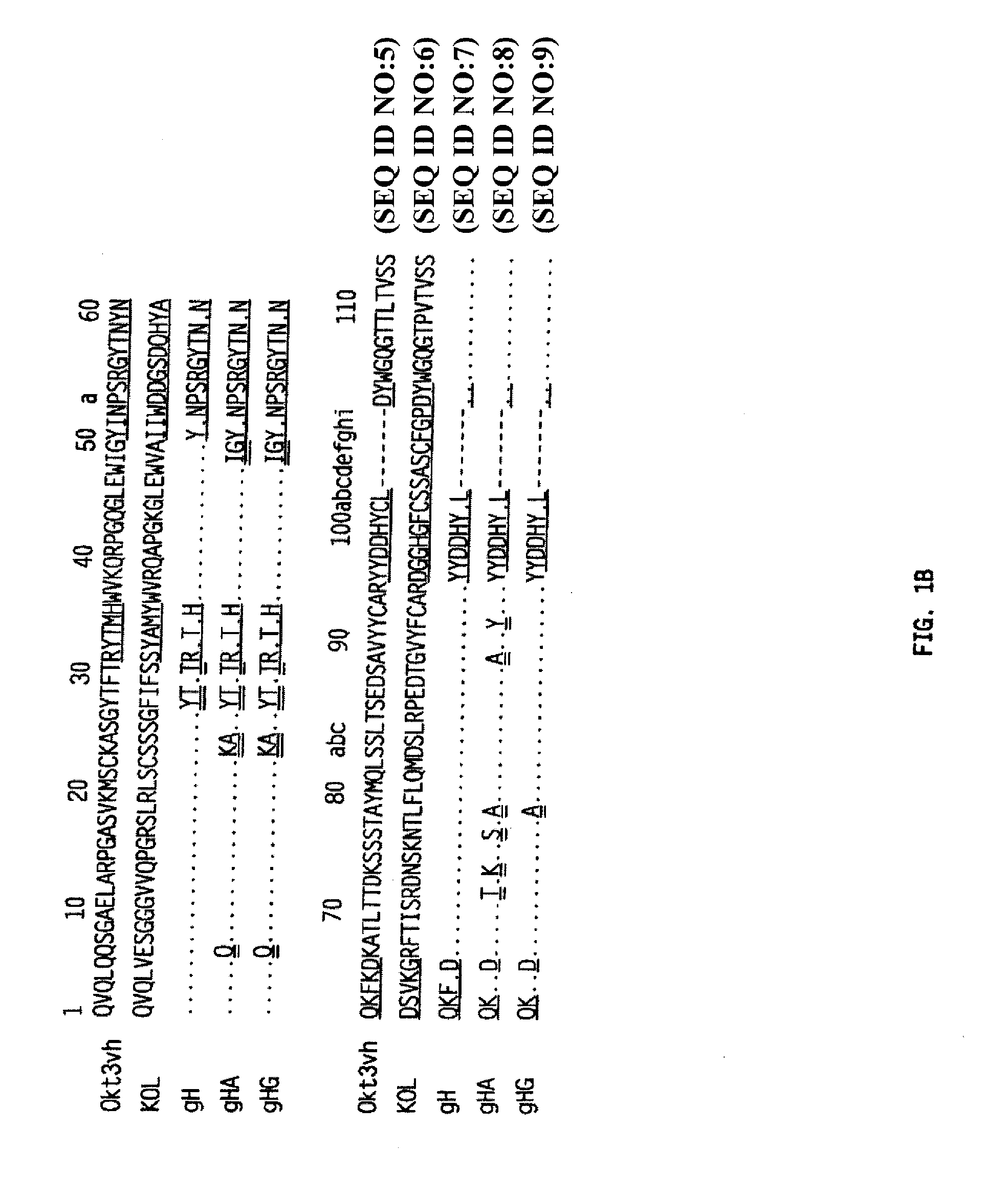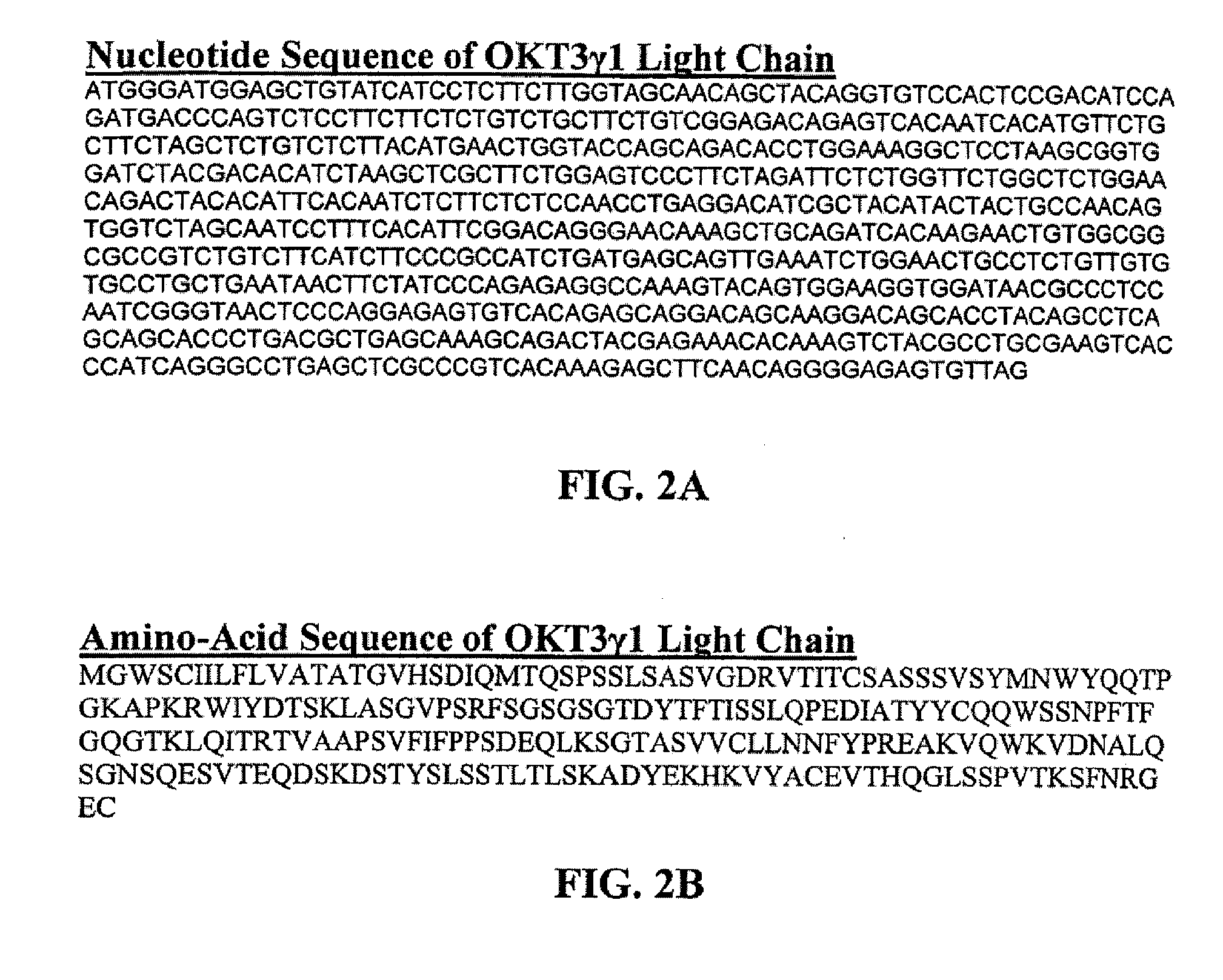Methods for the Treatment of Autoimmune Disorders Using Immunosuppressive Monoclonal Antibodies with Reduced Toxicity
a monoclonal antibody and immunosuppressive technology, applied in the field of autoimmune disorders using immunosuppressive monoclonal antibodies with reduced toxicity, can solve the problems of more serious systemic complications, more at-risk patients for developing opportunistic infections, and minor infections can rapidly become of serious concern, so as to reduce the possibility of cytokine release, reduce the level of cytokine release, and increase the concentration of antibodies administered
- Summary
- Abstract
- Description
- Claims
- Application Information
AI Technical Summary
Benefits of technology
Problems solved by technology
Method used
Image
Examples
Embodiment Construction
of U.S. patent application publication US 2003 / 0108548, which is hereby incorporated by reference in its entirety. In specific embodiments, the dosing regimen achieves a combined T cell receptor coating and modulation of at least 50%, 60%, 70%, 80%, 90%, 95% or of 100% with, in specific embodiments, little to no detectable free anti-human CD3 antibody (for example, less than 200 ng / mL the drug detected in the blood of the patient by standard methods known in the art).
[0039] In specific embodiments, the anti-human CD3 antibody is not administered by daily doses over a number of days, but is rather administered by infusion in an uninterrupted manner over 4 hours, 6 hours, 8 hours, 10 hours, 12 hours, 15 hours, 18 hours, 20 hours, 24 hours, 30 hours or 36 hours. The infusion may be constant or may start out at a lower dosage for, for example, the first 1, 2, 3, 5, 6, or 8 hours of the infusion and then increase to a higher dosage thereafter. Over the course of the infusion, the patient...
PUM
| Property | Measurement | Unit |
|---|---|---|
| period of time | aaaaa | aaaaa |
| period of time | aaaaa | aaaaa |
| period of time | aaaaa | aaaaa |
Abstract
Description
Claims
Application Information
 Login to View More
Login to View More - R&D
- Intellectual Property
- Life Sciences
- Materials
- Tech Scout
- Unparalleled Data Quality
- Higher Quality Content
- 60% Fewer Hallucinations
Browse by: Latest US Patents, China's latest patents, Technical Efficacy Thesaurus, Application Domain, Technology Topic, Popular Technical Reports.
© 2025 PatSnap. All rights reserved.Legal|Privacy policy|Modern Slavery Act Transparency Statement|Sitemap|About US| Contact US: help@patsnap.com



